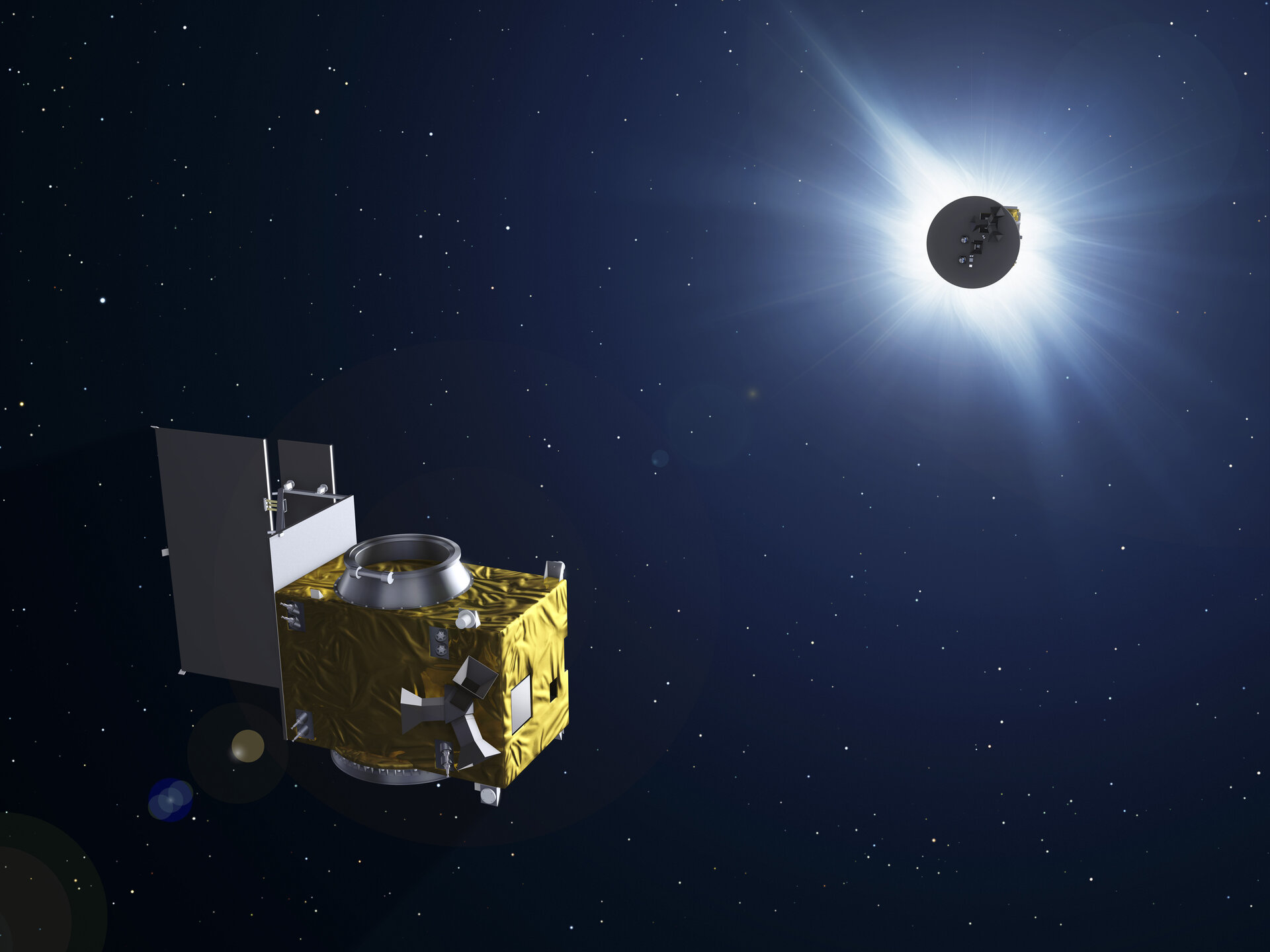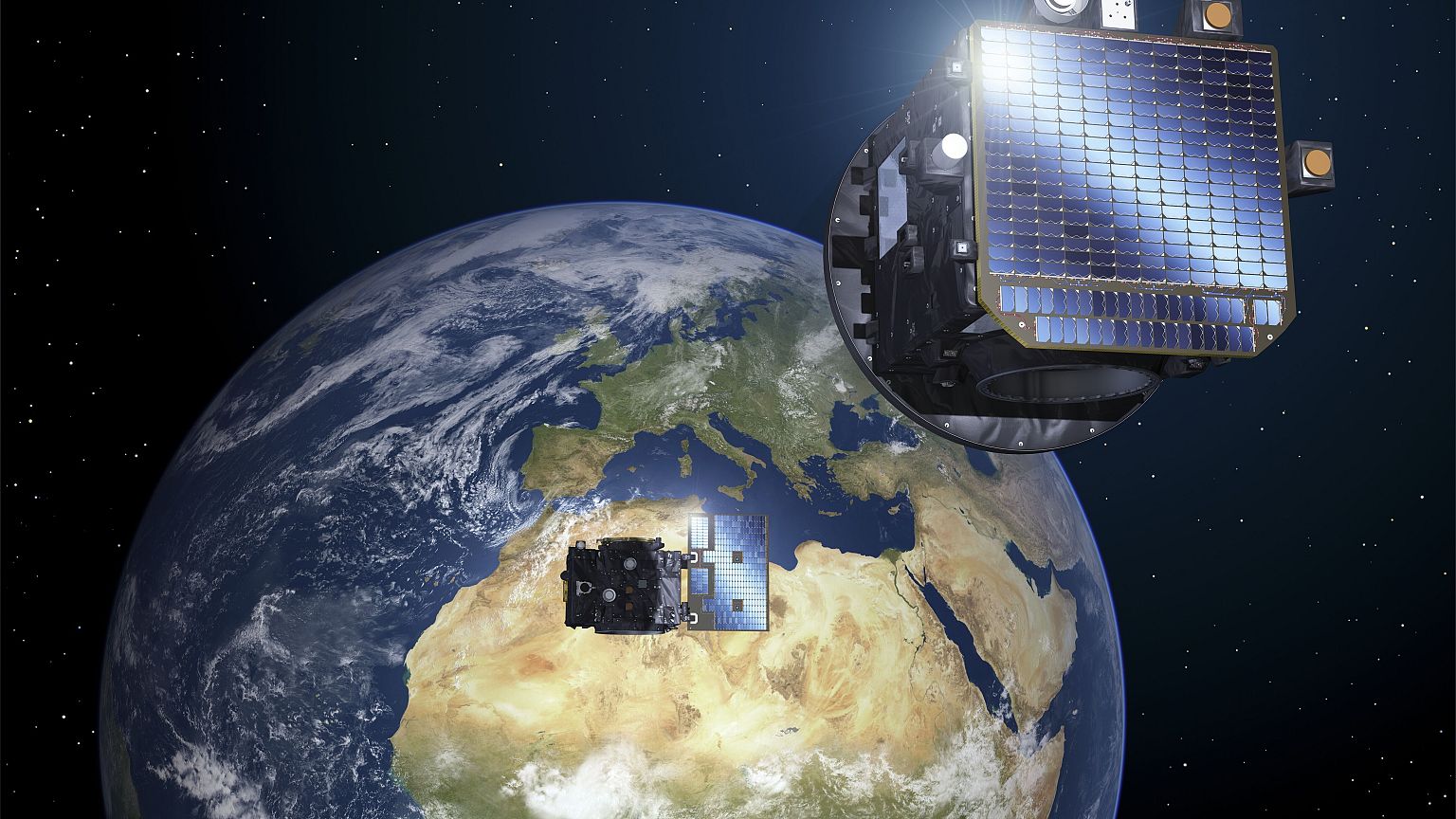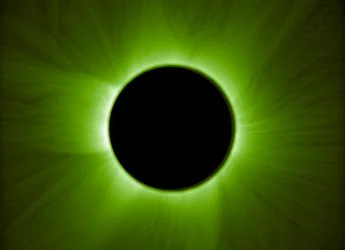In a breakthrough that could transform solar science, two spacecraft from the European Space Agency (ESA) have successfully recreated artificial solar eclipses from space ESA solar eclipse. This ambitious mission—Proba-3—has already provided the clearest ever views of the sun’s blazing corona, the mysterious outer atmosphere that holds clues to some of astrophysics’ biggest questions.

How ESA solar eclipse Proba-3 Recreates Eclipses in Space
The Proba-3 mission involves two satellites flying in extremely precise formation, just 150 metres apart, in a highly elliptical orbit around Earth. One satellite acts as an occulting disk, blocking the sun’s bright center, while the other captures images of the surrounding corona.
This setup replicates a total solar eclipse—except it’s engineered, repeatable, and prolonged. According to ESA officials, the system can create up to two artificial eclipses every week, each lasting as long as six hours—far longer than the fleeting natural eclipses visible from Earth.
Andrei Zhukov of the Royal Observatory of Belgium, a lead scientist on the mission, remarked, “We could see the corona without any special image processing. It was just visible there, like during a natural total solar eclipse.”
Unlocking the Secrets of the Sun’s Corona

The sun’s corona is a region of immense scientific interest because it is 200 times hotter than the sun’s surface—a phenomenon that still puzzles researchers. With traditional Earth-based eclipses being rare (only one every 18 months), Proba-3’s regular, extended observations represent a revolution in solar science.
So far, Proba-3 has performed nine successful test eclipses. The mission, launched on December 5 from India, is expected to produce over 1,000 hours of eclipse data across its two-year duration.
Why Artificial Eclipses Matter
This artificial eclipse technique is not just a scientific novelty—it provides critical data to understand solar weather events that can affect satellites, astronauts, and power infrastructure on Earth. By offering long-term, high-resolution views of the sun’s magnetic and thermal activity, Proba-3 can help improve space weather forecasting.

Natural solar eclipses on Earth last just a few minutes and occur in narrow geographic bands. In contrast, Proba-3’s system can create controlled eclipses every 20 hours, allowing for continuous solar monitoring that bridges critical gaps in our understanding.
ESA’s Push into Advanced Heliophysics
The Proba-3 spacecraft is part of ESA’s broader heliophysics initiative. It works alongside missions like the Solar Orbiter, which recently delivered the first close-up images of the sun’s south pole. Together, these missions aim to decode the magnetic mysteries of our star and understand its cycles of activity and quiescence.
ESA engineers emphasize that this marks a new era for solar science. “We’re not just observing from afar—we’re creating ideal observational conditions in space,” noted a project lead from ESA’s solar division.
Launch Collaboration with India
The Proba-3 mission also reflects ESA’s growing collaboration with international partners, especially India’s space agencies. The spacecraft were launched from Indian soil in late 2024, showcasing the country’s expanding footprint in global space exploration.
Conclusion: Towards a Brighter View of the Sun
With every precisely choreographed orbit, Proba-3 is delivering unprecedented insight into the sun’s corona, helping scientists better predict solar storms and understand why this outer layer burns millions of degrees hotter than the surface below.

These engineered eclipses may look like space magic, but they’re firmly grounded in science—and they may finally unravel the mysteries of our nearest star. As the mission progresses, expect regular discoveries that could change how we see and protect life under the sun.









